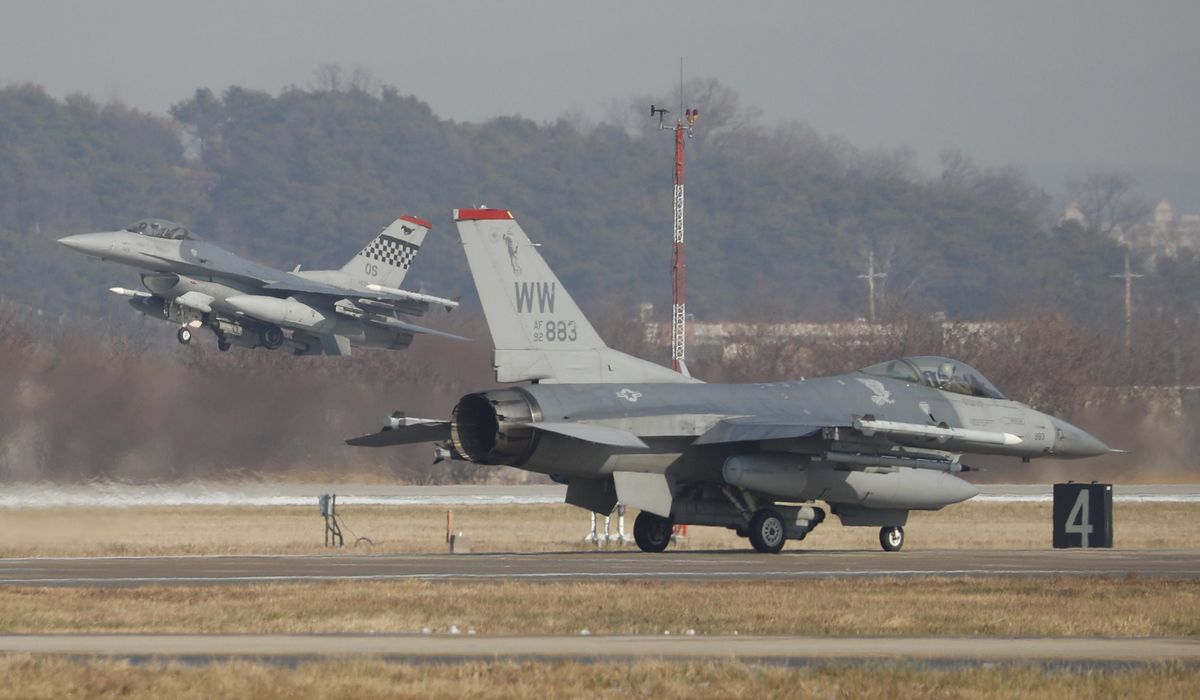


It’s a familiar pattern that has played out over and over throughout the year-long Russia-Ukraine war.
Ukraine asks Washington for a specific weapon, vehicle or piece of military equipment to use against the invaders. A reluctant Biden administration initially says no, fearing the move could inflame tensions with Russia and escalate the conflict. But public pressure and behind-the-scenes cajoling from Kyiv, Capitol Hill and elsewhere eventually convinces the White House to fulfill the request.
The slow-motion theatrics are playing out again right now, with F-16 fighter jets and the U.S. Army Tactical Missile System (ATACMS) as the latest stars of the show. Ukrainian President Volodymyr Zelenskyy has publicly pushed for F-16s for months, arguing they would be a game-changer for his country. The U.S. has long been wary that the move could draw the West into a direct war with Russia, but President Biden this week encountered protesters in Poland calling on him to send the jets.
Is history about to repeat itself? Some key lawmakers believe so, arguing that the tide is rapidly turning in Ukraine’s favor and that Russia’s threats to retaliate were increasingly hollow.
House Foreign Affairs Committee Chairman Michael McCaul told reporters this week while visiting Kyiv that White House and Pentagon officials are still debating among themselves whether to send F-16s or ATACMS.
“But I’m seeing increasing momentum towards getting the artillery and the planes in,” the Texas Republican said, according to Reuters. “And in any event, we can start training the pilots right now so they’re ready.”
SEE ALSO: ‘System-changing’: Fallout from Russia-Ukraine war reshapes global order
While Mr. Biden was in Kyiv this week, the administration announced a fresh package of more than $450 million in military aid for Ukraine. The State Department explained that the package includes “additional ammunition for High Mobility Artillery Rocket Systems,” or HIMARS, a U.S. system that technically is capable of firing ATACMS.
However, the Wall Street Journal reported in December that the U.S.-provided HIMARS have been modified so they couldn’t fire ATACMS or similar weapons. So far the administration has publicly stood firm against sending the missiles, which have a range of nearly 200 miles.
“Our view is that we think the Ukrainians can change the dynamic on the battlefield and achieve the type of effects they want to push the Russians back without ATACMS,” Pentagon Undersecretary for Policy Colin Kahl told reporters last month.
But critics say the system would fill a key gap in Ukraine’s capabilities.
“These missiles would allow the Ukrainian military [to] strike high-value targets deeper within occupied Ukrainian territory, helping to blunt Russia’s offensive and facilitate Ukraine’s own counteroffensive,” John Hardie, Russia Program deputy director at the think tank Foundation for Defense of Democracies, wrote this week.
“The risk of Russian retaliation is overstated, and the administration’s latest argument that it doesn’t have enough missiles to spare doesn’t pass muster,” he said. “The United States has invested tens of billions of dollars in helping Ukrainians defend their homes from Russian aggression and retake their territory. It would be foolish now to withhold a key capability that can help Kyiv make good on that investment.”
Russian officials have seemed to warn of escalation if the U.S. decides to send F-16s or ATACMS. For example, Russian Deputy Foreign Minister Sergei Ryabkov last month called such potential deliveries an “element of psychological warfare” against Russia that represented “the most dangerous path” for the West to take.
But the Kremlin has lobbed such threats before. On numerous occasions, despite those threats and the fear of escalation, the administration has eventually acquiesced and given Ukraine what it wanted.
A few examples: In the early weeks of the war, the administration refused to send Patriot missile defense batteries to Ukraine, with officials privately arguing that U.S. troops would need to enter Ukraine to teach troops how to use the system — and that such a step was out of the question.
Last December, the administration gave in to pressure from both sides of the Atlantic and sent a Patriot battery to Ukraine.
Similarly, the administration changed course earlier this year and began sending to Ukraine America’s famed M1-Abrams tanks, part of a multinational NATO push to send heavy ground vehicles to the fight. The administration initially appeared reluctant, arguing that the Abrams is a “very complicated” piece of equipment, as Mr. Kahl described it last month, and that it may not be the best choice for Ukraine.
Part of the explanation for the administration’s repeated course changes has been the trajectory of the war itself. Ukraine has fared much better than initially expected, and what once seemed inconceivable — a definitive Ukraine victory over Russia — may be possible, if still something of a long shot.
That dynamic keeps forcing Mr. Biden to cross over his own red lines, in order to make good on his promise to provide Kyiv with the tangible battlefield tools needed to win the war.
“We’re going to stand with you, as long as it takes,” the president said in his State of the Union address this month.
• Ben Wolfgang can be reached at bwolfgang@washingtontimes.com.
